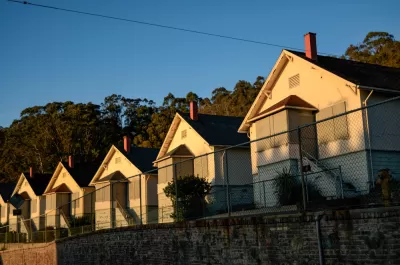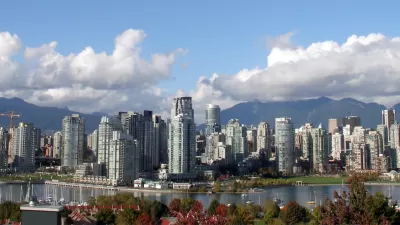Could vacancy taxes solve multiple housing challenges at once?

Tonya Mosley reports on a push to implement new taxes on vacant properties as communities wrestle with high housing costs and homelessness.
"According to the U.S. census report, a little over 12% of units in the U.S. were vacant in the third quarter of 2019. "And an estimated 4,000 parcels are empty in Oakland [California], a city that’s also grappling with rising homelessness," writes Mosley.
Vacancy taxes are increasingly under consideration as tool for making sure all available housing units are being used. Despite the efforts of some researchers, there's still very little active data on vacancy, according to the article (see the example of anonymous shell companies buying properties with cash). Good and timely data will be necessary to calculate an effective vacancy tax.
For examples of what forms vacancy taxes can take, there are already real world examples to chose from in Vancouver, B.C. and Washington, D.C. "[T]he vacancy tax in Vancouver, Canada, is defined by an amount of time that the property is unused, while in Washington, D.C., blighted homes are assessed then taxed accordingly."
The article includes highlights from an interview with Michael Lens, associate professor of urban planning and public policy at the University of California, Los Angeles.
FULL STORY: Vacancy Taxes: The Next Frontier In Housing Policy?

Planetizen Federal Action Tracker
A weekly monitor of how Trump’s orders and actions are impacting planners and planning in America.

Congressman Proposes Bill to Rename DC Metro “Trump Train”
The Make Autorail Great Again Act would withhold federal funding to the system until the Washington Metropolitan Area Transit Authority (WMATA), rebrands as the Washington Metropolitan Authority for Greater Access (WMAGA).

DARTSpace Platform Streamlines Dallas TOD Application Process
The Dallas transit agency hopes a shorter permitting timeline will boost transit-oriented development around rail stations.

San Francisco's School District Spent $105M To Build Affordable Housing for Teachers — And That's Just the Beginning
SFUSD joins a growing list of school districts using their land holdings to address housing affordability challenges faced by their own employees.

Car-Centric LA Suburb Looks to a Train-Oriented Future
City leaders in Rancho Cucamonga, the future western terminus of the Brightline West rail line to Las Vegas, want to reimagine the city as a transit-oriented, pedestrian-friendly community.

New Alaska Bitcoin Mine Would Burn as Much Energy as the State’s Largest Coal Plant
Fueled by “stranded” natural gas, the startup hopes to become the largest in the US, and to make Alaska an industry center.
Urban Design for Planners 1: Software Tools
This six-course series explores essential urban design concepts using open source software and equips planners with the tools they need to participate fully in the urban design process.
Planning for Universal Design
Learn the tools for implementing Universal Design in planning regulations.
Municipality of Princeton
Roanoke Valley-Alleghany Regional Commission
City of Mt Shasta
City of Camden Redevelopment Agency
City of Astoria
Transportation Research & Education Center (TREC) at Portland State University
US High Speed Rail Association
City of Camden Redevelopment Agency
Municipality of Princeton (NJ)





























